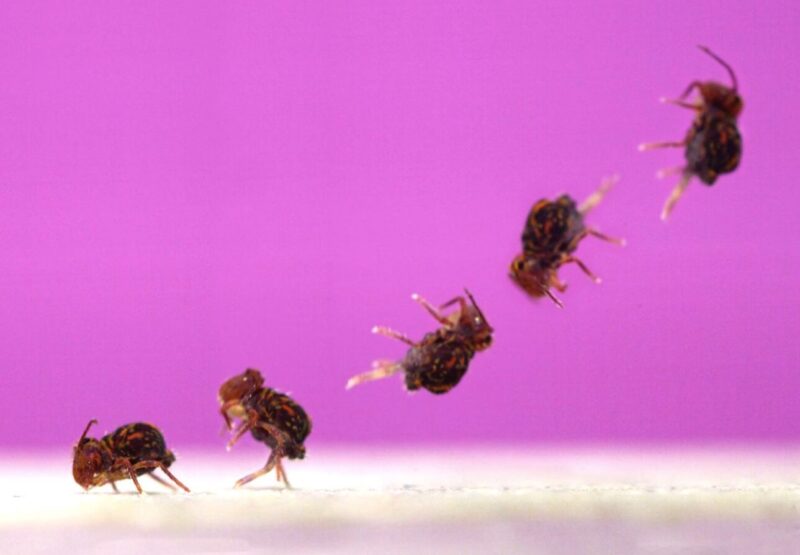A tiny arthropod beats out all other creatures for the world’s fastest backflip. The minuscule globular springtail has a flip rate of 368 per second. They jump so fast they seem to vanish in front of your very eyes.
The tiny bug’s jump lasts an average of 161 milliseconds. Blink and you’ll miss it. The springtails use this maneuver to escape predators.
These hexapods –- six-legged arthropods –- are only a millimeter or two long. Springtails are not equipped to bite or sting any oncoming predators. They only have one option for escape, and that is to get out of the way really, really quickly.
Adrian Smith and Jacob Harrison set out to discover how the tiny acrobats jump so incredibly fast.
“When globular springtails jump, they don’t just leap up and down, they flip through the air,” Smith explained. “It’s the closest you can get to a Sonic the Hedgehog jump in real life. So naturally I wanted to see how they do it.”
The little hexapods are not hard to come by. He collected the test subjects from his garden and started watching them.
The two researchers set up cameras to film the arthropods leaping into the air and completing their somersaults. A normal camera would not suffice: The springtails appear in one frame and then vanish. Capturing the full acrobatics display required a camera that shoots 40,000 frames per second.
They always somersault backwards
To get them to spring into the air, they shone a bright light on them or gently prodded them with the tip of a paintbrush. By analyzing the high-speed footage, they learned the biomechanics that allowed them to spin so rapidly in the air.
As the springtails launch themselves, an appendage from their underbelly hits the ground. Known as the furca, it pushes down hard, causing the springtails to jolt backwards into the air at around 1.5 meters per second.
Although they are only 1-2mm in size, they shoot 60mm into the air and spin between 14 to 29 times.
“They accelerate their bodies into a jump at about the same rate as a flea, but on top of that, they spin,” says Smith. “No other animal on Earth does a backflip faster than a globular springtail.”
The fact they always jump backward suggests this talent is used to escape danger rather than for general movement.
Though they might beat Simone Biles for the number of backflips in a row, she still takes the gold for landing them. The springtails either landed fairly gracefully or crashed into the ground. There was no in-between.
About half the time, they use a sticky forked tube they can push out of their bodies to help them navigate their return to terra firma. Usually used for grooming, the tube acts as “a sort of anchor that pulls them to their feet so they can get on with their day,” Smith told Science News.
If they did not manage this in time, they simply crash-landed and bounced around, unhurt, until they came to a standstill.






